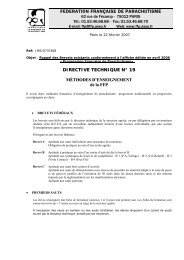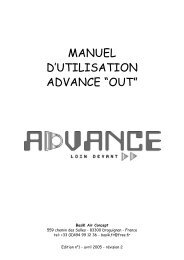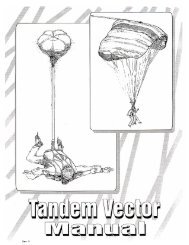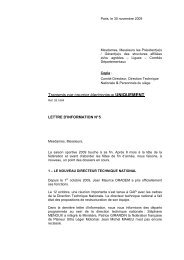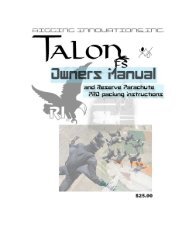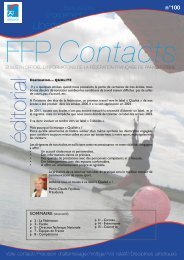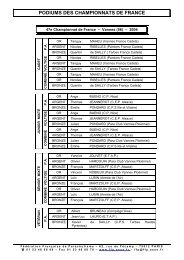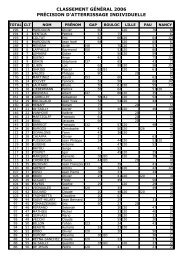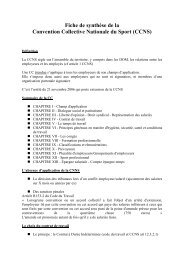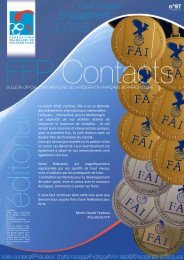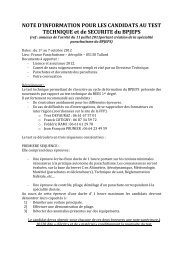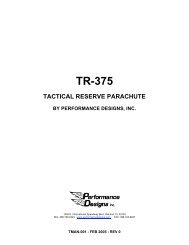You also want an ePaper? Increase the reach of your titles
YUMPU automatically turns print PDFs into web optimized ePapers that Google loves.
V E C T O R O W N E R ’ S M A N U A L<br />
MAINTENANCE & CARE<br />
INTRODUCTION<br />
The secret to extending the life of your new harness and container system is performing periodic<br />
inspections and maintenance. The inspections and maintenance that will be discussed go beyond<br />
a normal gear-check before boarding a plane. Under most circumstances, the Vector 3 requires<br />
very little maintenance unless it is subjected to abnormal or harsh conditions. Remember, you<br />
entrust your life to the skydiving equipment you have chosen. It is your responsibility to ensure<br />
that equipment remains in optimum working order.<br />
INSPECTING YOUR VECTOR 3<br />
The best approach to rig maintenance is to spend a few minutes performing a periodic, detailed<br />
inspection of the rig. The inspection should be performed at least once per month. Obviously, the<br />
more you use your equipment, the more frequently you should inspect it. If any wear or damage<br />
is found, have it fixed immediately. In addition to inspecting the rig yourself, ask your rigger to<br />
inspect the entire assembly every time the reserve is repacked. If you have ANY questions regarding<br />
the condition of your harness and container system, do not hesitate to ask a rigger or the<br />
manufacturer to take a look at it.<br />
GEAR INSPECTIONS SHOULD COVER ALL PARTS OF YOUR HARNESS<br />
AND CONTAINER SYSTEM, WHILE PAYING PARTICULARLY CLOSE<br />
ATTENTION TO THESE AREAS:<br />
❈ Cutaway System<br />
Refer to the 3-Ring section in this chapter for detailed information on inspecting the canopy<br />
releases.<br />
❈ Reserve System<br />
This includes the reserve ripcord, closing loop, pins, handle, housing, container and associated<br />
sewing. You should NOT attempt any repairs or modifications to ANY of these items unless you<br />
are a rigger. You can, however, identify smaller problems before they become more severe. Some<br />
items to look for would include kinks in the reserve ripcord cable, frayed or worn closing loop,<br />
frayed stitching on the container, etc.<br />
❈ Harness<br />
The harness should be inspected periodically for broken stitching or frayed webbing.<br />
❈ Main Container<br />
Inspect the plastic stiffeners in the container flaps and have replaced any that are broken. Replace<br />
any grommets that are deformed, nicked, damaged, or that are pulling out of their setting.<br />
❈ Main Pilot Chute<br />
Check the centerline (the length of nylon line inside the pilot chute that extends from the handle<br />
to the base) of the main pilot chute. It must be firmly sewn at each end; there must be no broken<br />
stitches or torn fabric. Inspect the seam that joins the pilot chute mesh to the pilot chute fabric. If<br />
the mesh is torn or badly frayed, replace the pilot chute.<br />
Page • 72:88 section 6 : maintenance and care<br />
09354 - 11/26/2003<br />
Rev 0



